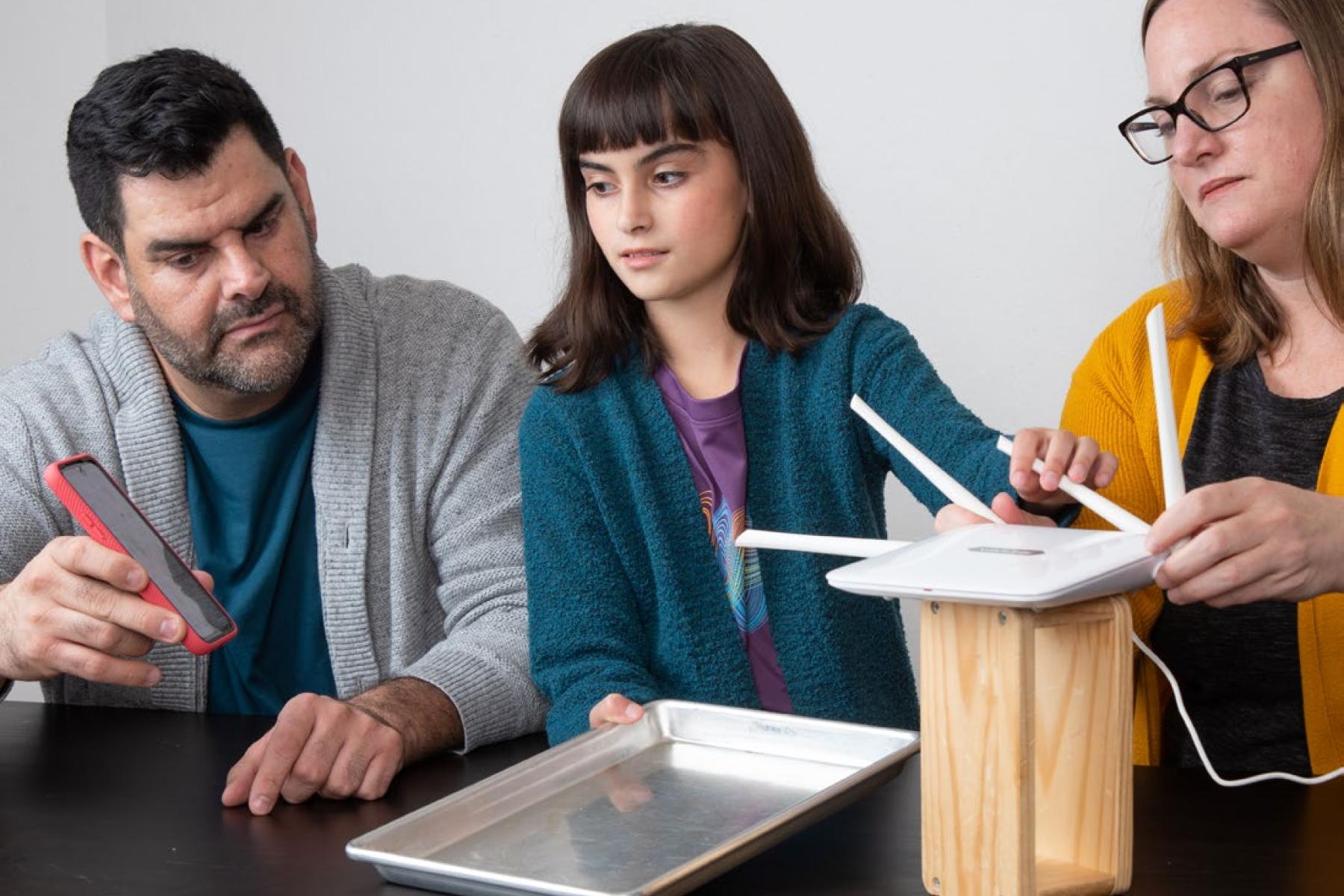DESCRIPTION
In this activity, learners will experiment with different materials to interact with the radio waves coming from a household Wi-Fi router. Participants will be challenged to both decrease and increase Wi-Fi signal strength through the choice and position of materials. Through use of a mobile app to track Wi-Fi signal strength, participants will explore the concepts of reflection, absorption, and transmission of radio waves within the experimental setup. An optional extension to this activity will introduce the concept of polarization of radio waves and allow participants to observe differences in dual-band Wi-Fi router signals.
Please note: This activity requires the installation of the Wi-Fi Detector app on an Android device. Link to the Google Play store provided below.
DESCRIPTION
In this activity, learners will experiment with different materials to interact with the radio waves coming from a household Wi-Fi router. Participants will be challenged to both decrease and increase Wi-Fi signal strength through the choice and position of materials. Through use of a mobile app to track Wi-Fi signal strength, participants will explore the concepts of reflection, absorption, and transmission of radio waves within the experimental setup. An optional extension to this activity will introduce the concept of polarization of radio waves and allow participants to observe differences in dual-band Wi-Fi router signals.
Please note: This activity requires the installation of the Wi-Fi Detector app on an Android device. Link to the Google Play store provided below.
TRAINING VIDEOS
OBJECTIVES
LEARNING GOALS
Radio waves are invisible and all around us.
Radio waves transfer energy that can be reflected or absorbed, or pass through materials.
Different devices use different radio frequencies.
Credits
Developed with funding from the National Science Foundation under Award Number 2053160. Any opinions, findings, and conclusions or recommendations expressed in this product are those of the authors and do not necessarily reflect the views of the Foundation.
Creative Commons Attribution Non-Commercial Share Alike 3.0 United States (CC BY-NC-SA 3.0 US).
View more details

NISE Network products are developed through an iterative collaborative process that includes scientific review, peer review, and visitor evaluation in accordance with an inclusive audiences approach. Products are designed to be easily edited and adapted for different audiences under a Creative Commons Attribution Non-Commercial Share Alike license. To learn more, visit our Development Process page.







